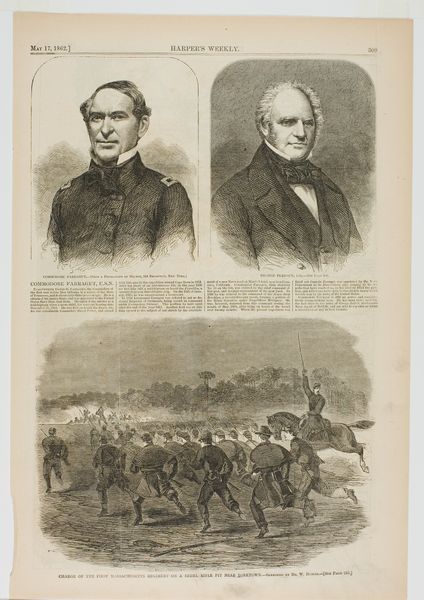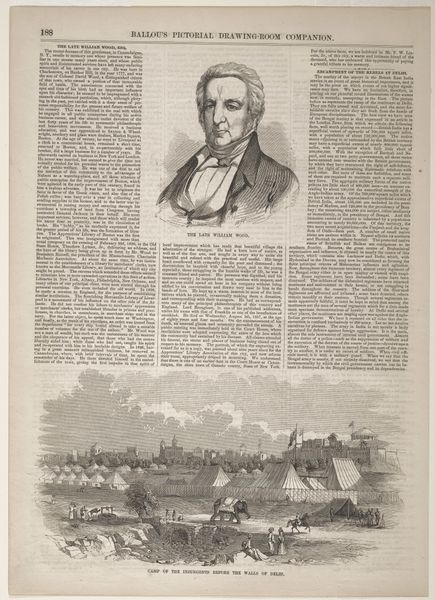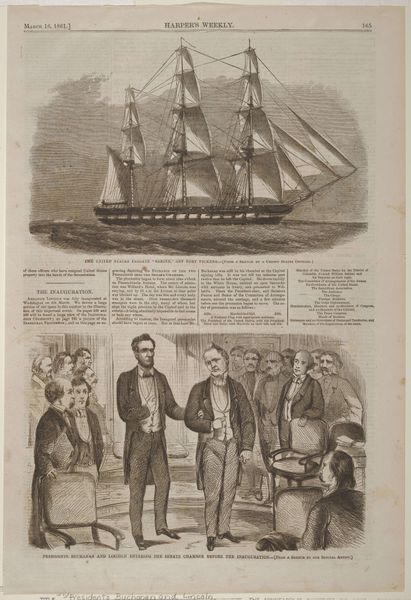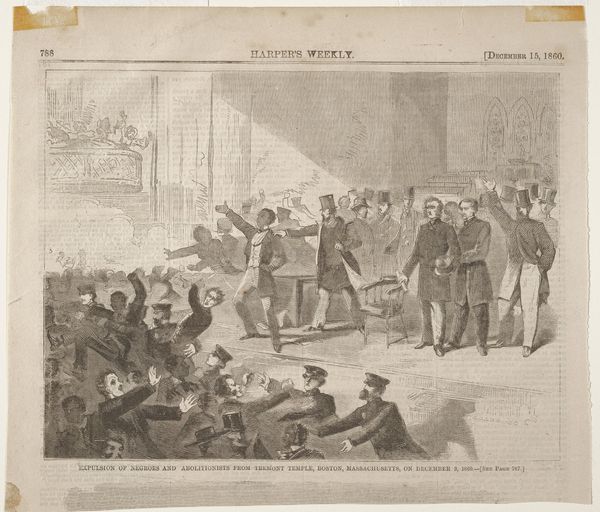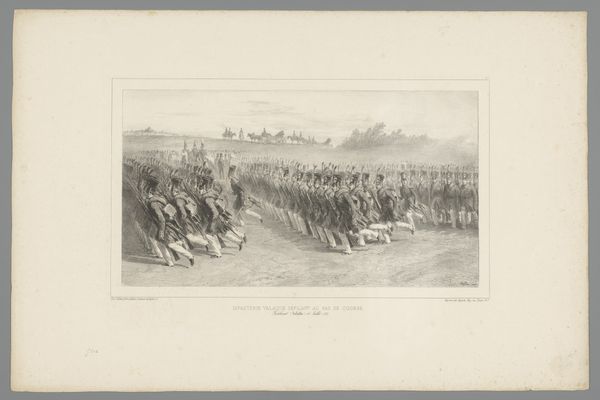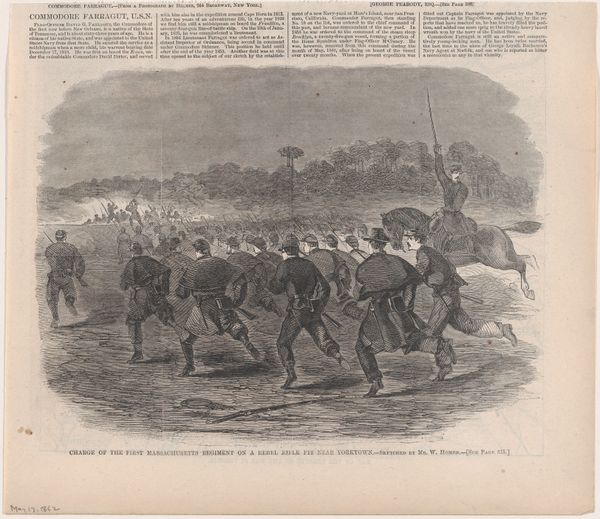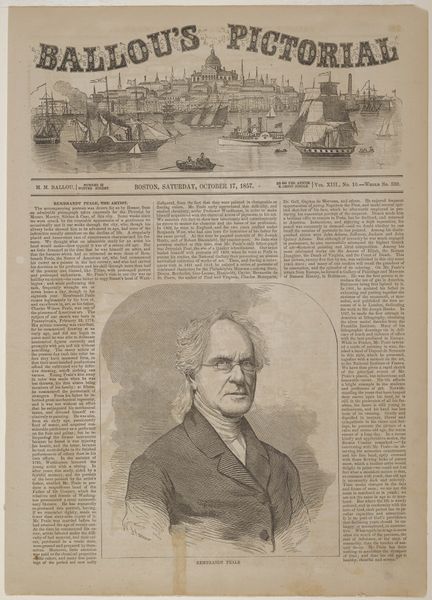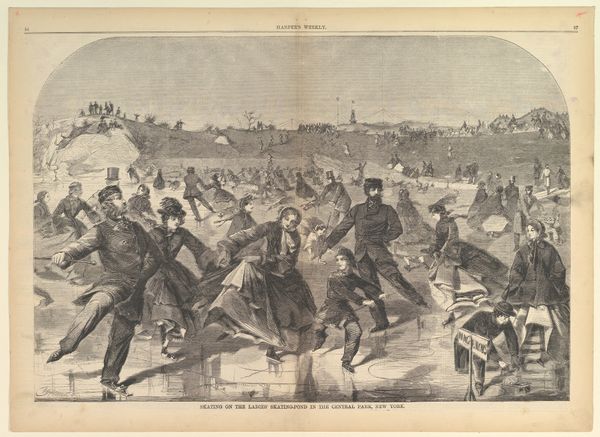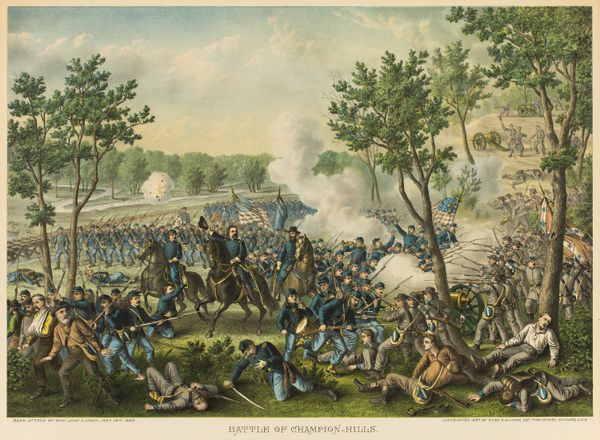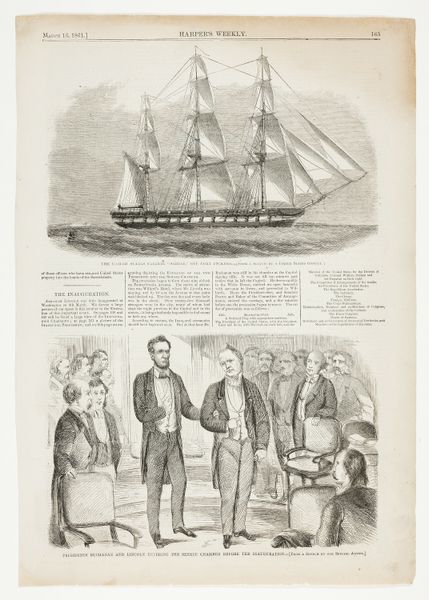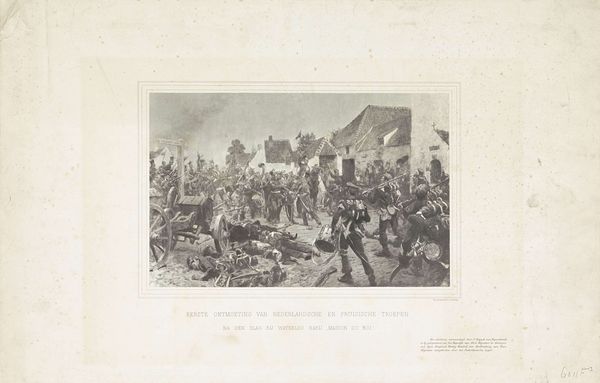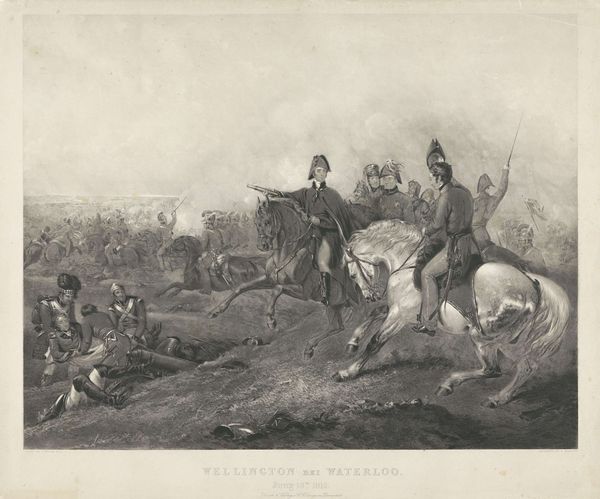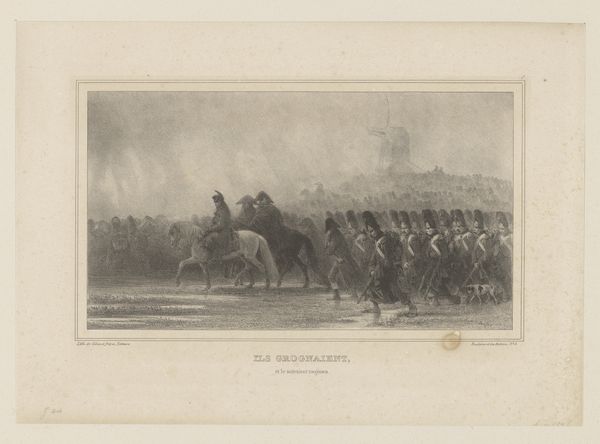
Charge of the First Massachusetts Regiment on a Rebel Rifle Pit Near Yorktown 1862
0:00
0:00
graphic-art, print, etching, woodblock-print, woodcut, wood-engraving
#
graphic-art
#
narrative-art
# print
#
etching
#
landscape
#
woodblock-print
#
woodcut
#
united-states
#
history-painting
#
wood-engraving
#
realism
Dimensions: 10 13/16 x 9 1/8 in. (27.5 x 23.2 cm)
Copyright: Public Domain
Curator: Winslow Homer's wood engraving, "Charge of the First Massachusetts Regiment on a Rebel Rifle Pit Near Yorktown," created in 1862, presents a stark depiction of Civil War conflict. It's held here at the Minneapolis Institute of Art. Editor: My initial feeling is one of urgency. The compressed perspective really conveys the chaos and terror of battle, though filtered through, I'd say, a distinctly northern lens. Curator: Indeed, Homer produced many such scenes for Harper's Weekly, bringing the war home to civilian audiences. Consider how the very structure of illustrated newspapers shaped the public's understanding of events. Editor: Right. It's crucial to remember that these images weren’t neutral. The paper's slant surely impacted perceptions of heroism, sacrifice, even the righteousness of the Union cause, especially since that particular regiment, if memory serves, had a large contingency of free Black men, which is completely ignored here. Curator: Precisely. The print omits nuanced details in favor of a clear narrative. Note the active lines, the composition directing our eye toward the distant rifle pit. It promotes a heroic ideal through strategic focus and erasure. Editor: Yet there is a disturbing lack of individuality. They all seem uniform, nameless…cannon fodder. The black and white, lacking in vibrancy, lends it a quality of past glory, a memory constructed. Curator: I find that stark contrast fascinating. Wood engraving demanded sharp contrasts, a commitment echoed in the black-and-white moral clarity dominating discourse. This artwork tells us a lot about period technology and how narratives were made digestible for a broad public. Editor: This print is, in my view, a potent reminder of how images both reflect and manipulate collective memory. And it implicitly endorses established racial power structures and who got to participate in shaping public narrative. Curator: The act of remembrance and how it's controlled— a lens this artwork offers that is equally applicable to that era and our own. Editor: Exactly, seeing this piece prompts critical questions about the stories we tell ourselves.
Comments
No comments
Be the first to comment and join the conversation on the ultimate creative platform.
